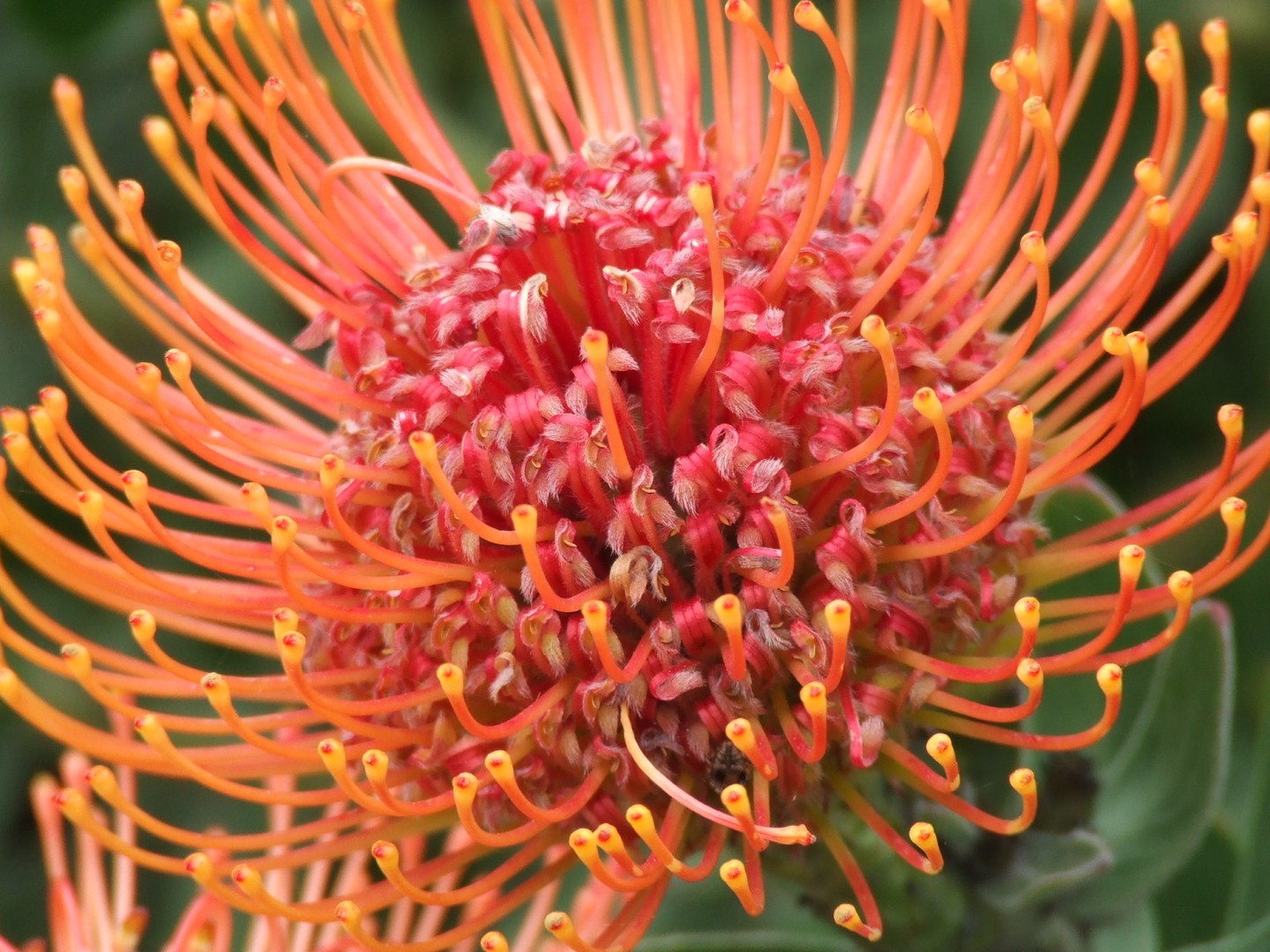– The botanical characteristics and natural habitat of Leucospermum codifolium, commonly known as the Pincushion Flower.
– The role of Leucospermum codifolium in ecosystem balance and its pollination strategies.
– Conservation efforts and cultivating Leucospermum codifolium within the Leanne B. Roberts African Savanna exhibit and similar environments.
– Challenges faced in the preservation of Leucospermum codifolium and its natural habitat.
– The importance of integrated zoo management in promoting wildlife conservation and education.
Emerging from the rich biodiversity of South Africa’s Western Cape, Leucospermum codifolium captivates with its vivid inflorescences and distinctive growth habits. Member of the Proteaceae family, the striking Pincushion Flower is well-adapted to the Mediterranean climate of its native coastal landscapes. Its cylindrical leaves with a waxy coat and the round, pincushion-like blooms are visually alluring and teeming with scientific intrigue.
The flowers of Leucospermum codifolium express a vibrant orange-red palette and bloom from late winter to early spring. While they’re a treat to the eyes, these blooms play a much more vital role in the ecosystem. They are a primary source of sustenance for nectar-feeding birds, particularly the Cape Sugarbird and different species of sunbirds, which are instrumental in the plant’s pollination. The flower heads, colloquially termed ‘pincushions’ for their resemblance to the sewing accessory, consist of numerous tubular flowers that produce a bounty of nectar, drawing in a diversity of pollinators and enriching the area’s biodiversity.
Dwelling on the conservation efforts, the Leucospermum codifolium is also a subject of interest in botanical gardens and exhibits around the globe. Specifically, the specimens grown in the Leanne B. Roberts African Savanna exhibit provide an immersive educational experience. Here, conservationists and horticulturists collaborate to recreate the plant’s natural habitat, underscoring the importance of environmental conditions such as soil type, drainage, and exposure to sunlight. Exhibits like this serve as living laboratories, enlightening visitors on the intricate balance of savanna ecosystems while showcasing best practices in ex-situ conservation.
However, the continuation of this species faces several obstacles. Habitat loss due to human development, changes in land use, and the emerging threat of climate change loom over the Pincushion Flower. Fragmented populations are more vulnerable to events like wildfires, which, despite being a natural part of their ecological cycle, can prove catastrophic when misaligned with natural intervals due to human interference. Furthermore, the dependence on specific avian pollinators links the plant’s fate to that of these bird species, which also face conservation challenges.
Navigating these hurdles necessitates an intelligent approach, combining rigorous scientific research with community engagement and policy development. Reserves and protected areas are essential for conserving biodiversity but must be coupled with education to foster public support. In zoos and botanical exhibits, showcasing these plants under careful stewardship encourages an appreciation for native flora and the intricate web of life they support.
In light of these facts, zoos play an increasingly important role in animal conservation and preserving plant species like Leucospermum codifolium. Integrated zoo management encompasses habitat creation, species propagation, and public education, fostering a connection between visitors and the natural world. The meticulous replication of natural environments in zoos and botanical gardens aids research and conservation while igniting interest in preserving these species in their wild conditions.
Understanding the Pincushion Flower within the context of its ecosystem and the broader environment affords an unforgettable lesson on interconnectivity. The value of Leucospermum codifolium extends far beyond its beauty, representing a critical component in the tapestry of life that is the South African savanna. With every initiative directed at protecting this species and its environment, steps are taken toward preserving the richness and resilience of our natural world for future generations.
*****
Source Description
Leucospermum codifolium (Pincushion Flower) naturally grows near the south coast of the Western Cape province of South Africa. It can be found in the Leanne B. Roberts African Savanna exhibit.


